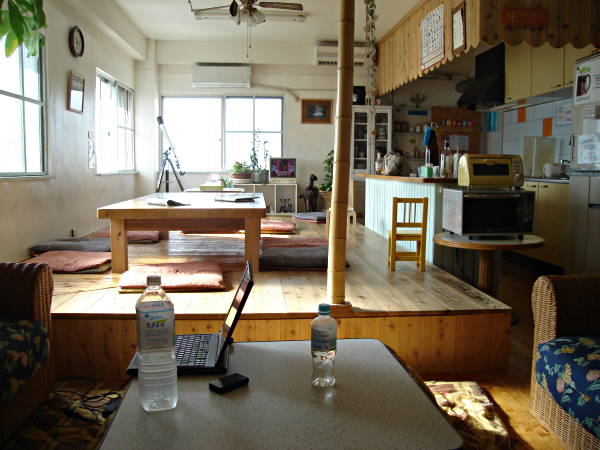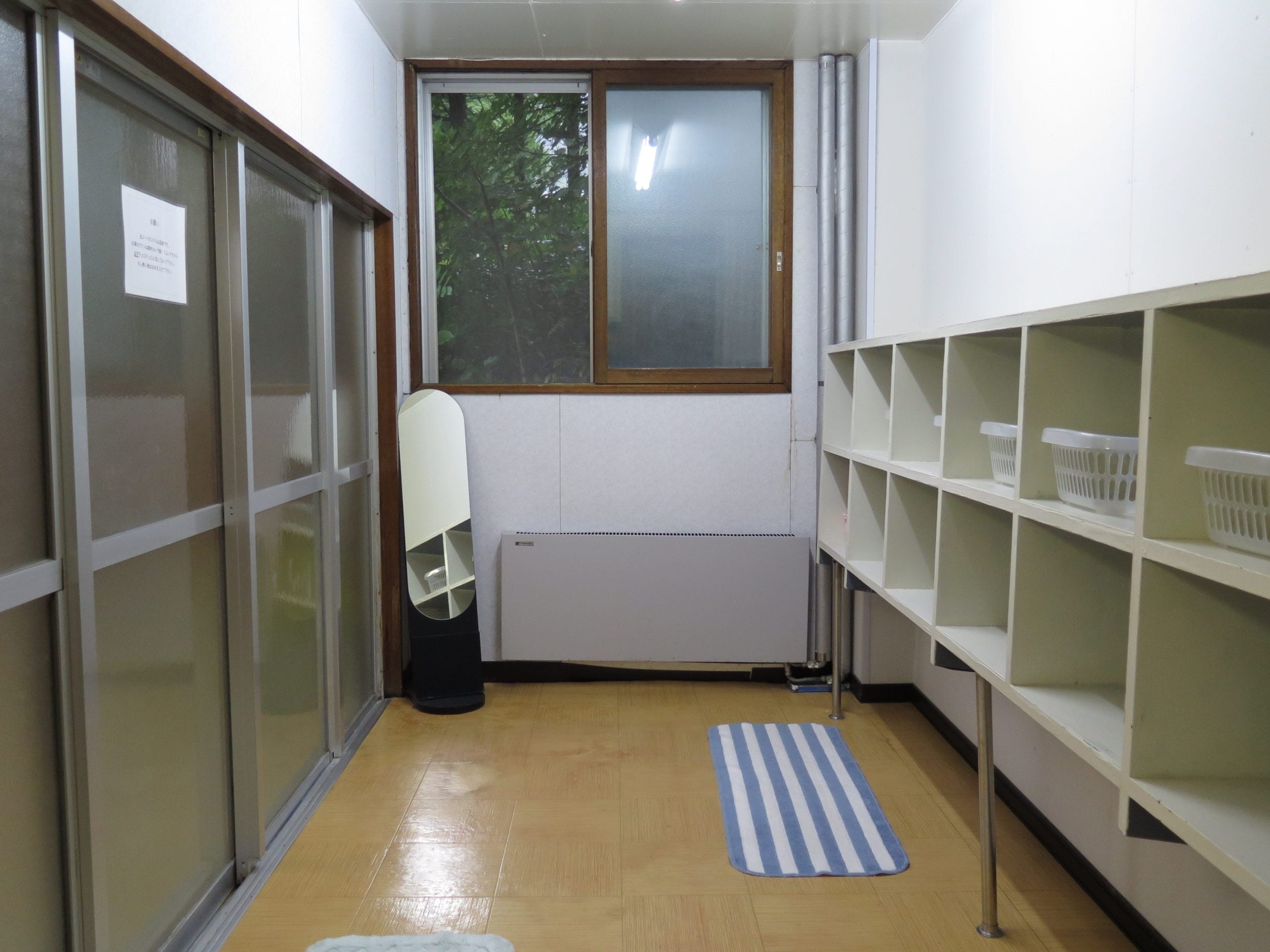No products in the cart.
June 1
Student Life in Japan: Japanese Share Houses
0 comments
If you are coming to Japan for longer than a month, you’re going to need a place to stay. Basically, there are 3 main types of lodging to consider, and you’ll typically know what you’re looking for based on how long you intend to be in Japan (and how much you plan to move around). For short term, high-flexibility, you’re likely looking at a hotel, and long term residents will be looking for an apartment to set up as home base and deck out with furniture. For everyone else in a situation somewhere in the middle, there's actually a great solution – the Japanese share house.
Share houses in Japan are run either by companies or in some cases by individuals, but they typically cater to people who:
In a few cases, you will have your long-term living arrangements set up before you arrive – company housing, staying with a friend or significant other, or maybe even a homestay program. A share house in Japan can also be a great place to start out and spend a month scoping out a longer term apartment or house when you first arrive.
If you’re at all interested in staying in a Japanese share house, this guide will break down all the factors you need to consider as well as hopefully point you in the right direction to find the right share house for your situation!
Imagine you have a large apartment flat anywhere between 2 – 20+ bedrooms, and a main living area with facilities in the middle including kitchen, laundry, living room, etc. That's the basic idea.
For a flat monthly fee, you rent a room and get access to that space, plus all the shared space with other tenants. Depending on the share house, your room may have private cooking facilities, and in some cases even a kitchenette (although that's quite uncommon). Your rent often includes utilities and internet, although in most share houses the laundry is coin laundry, so be prepared for that.

Japanese share house kitchens are exactly like what you would expect in a hostel kitchen.
Depending on the share house company, your new roommates will either be exclusively non-Japanese nationals, or a mix of locals and some foreigners – this seems to be the new trend recently. Regardless of the mix of nationalities, renters at Japanese share houses tend to be a mix of young professionals, students, and a handful of long-term travellers. People tend to enjoy the social aspect, but of course everyone is different – you'll read the air and figure it out once you're settled in.
In major cities (Tokyo, Osaka, Kyoto, etc.), rent will be between ¥40,000 – ¥160,000 depending on amenities, age and condition of the building, and number of tenants in the flat. You'll see the lower end of this the further out from the city you look, and if you're willing to live in a slightly older building. Some modern locations closer to (or in) the popular neighborhoods with concrete construction and brand new stainless steel appliances will push the upper bounds of this and you may even pay a slight premium over a typical apartment rent for the benefit of no fixed contract and furnished living quarters.
If you're look at a living commitment of less than 3-4 years, often times your yen will go a lot further in a share house than an apartment. This is because in addition to low up front fees (no key money or agent commission!) you also won't have to furnish your accommodations. The start up cost to living in Japan is significant; if you start out at an apartment your initial fees + furniture costs can come out well above ¥1,000,000 depending on location and whether or not you have an Ikea nearby. Never mind the fact that you have to set up contracts with electric, water, gas, and internet...
The difference in taking up a room at a Japanese share house is that you might be looking at a small refundable deposit and your first month's rent to get your key – this can be as low as ¥70,000 ~ ¥100,000 which simply cannot be beat by an apartment.

How a typical Japanese share house bathroom looks – basically the same as a Japanese bath house
Sakura House has been around since the early 1990's, and they're professionals at running and managing share houses. Based out of Shinjuku, the majority of their holdings are in the Tokyo area, but the also have some locations in Kanagawa and Kyoto. Lots of different options, typically foreigner-only.
Also established in the early 1990's, Oakhouse operates mainly in the Tokyo area, with some locations in Hyogo and Osaka. Oakhouse offers some really sharp looking properties, and boasts a mix of Japanese and non-Japanese in their buildings to bring outside cultures together with Japanese culture.
A newer entrant to the share house market, Tokyo Sharehouse started in Tokyo in 2010. The CEO Moriyama claims he wants to bring people together in a 'helpful' and 'fun' way, and their properties showcase that with some truly stunning buildings at really great rates.
This list is absolutely not comprehensive – there are far too many options out there for us to list in this post. If you're looking for a Japanese share house, Google is your friend. Spend some time making a list of your top 4 or 5 and send out some emails! The company you rent from is the company you will have to deal with as property manager, so get a sense of how they respond to your inquiry now.
It goes by a lot of different names: Social Residence, Social House, Social Apartment – but the idea is the same – get people to socialize and enjoy life together.
Compared to a typical share house, the social house concept puts a huge emphasis on large open spaces, and upscale social living. Simply put, these properties are designed to look amazing and encourage a lot of time in the shared areas. If you are a socialite, you should really consider looking at the social house offerings of the above mentioned companies, as well as Social Apartment.
The key word is community. You will enjoy living in these spaces if you don't mind the constant buzz of action happening during waking hours and being encouraged to participate in activities, parties, cooking sessions, etc. by other residents or the property managers. Having interviewed residents at one of the larger Social Apartment properties, everyone there got significant value out of being with other people in their off-hours.
The main difference when comparing a social house to a normal share house is a much higher number of residents, and much larger (and usually more commercial) amenities to support a community lifestyle.
When looking for a Japanese share house, be sure to keep in mind that it can be a once-in-a-lifetime experience to share a living space abroad with people from other cultures. You will learn about yourself and what matters to you in a living space, and the nice part is that if you end up disliking it, there isn't much holding you back from moving to another place.
Japan can be a difficult place to live if you are new and totally on your own. The benefit of living with others in a similar situation is that you have a support network and when you come up against difficulties (you will), you have a sort of temporary family to go back to and share a drink or a meal with.
If you're a social person, you'll probably love living in a Japanese share house. It's also the best choice if you don't know for sure where you'll want to live in 2 years or you can't speak Japanese. There can be tensions if you have problems with other tenants or your neighborhood, but overall the experience of living in a share house can be really rewarding.
Our verdict is give it a try – even if you intend to get an apartment later! You'll learn a lot about living in Japan, save some money, and grow your social network.
Featured image for this article attributed to Tim Franklin Photography.
Did you like this article? Please share it around!
Tags
language school
Never miss a post – let us slide into your inbox with hot articles.
Session expired
Please log in again. The login page will open in a new tab. After logging in you can close it and return to this page.